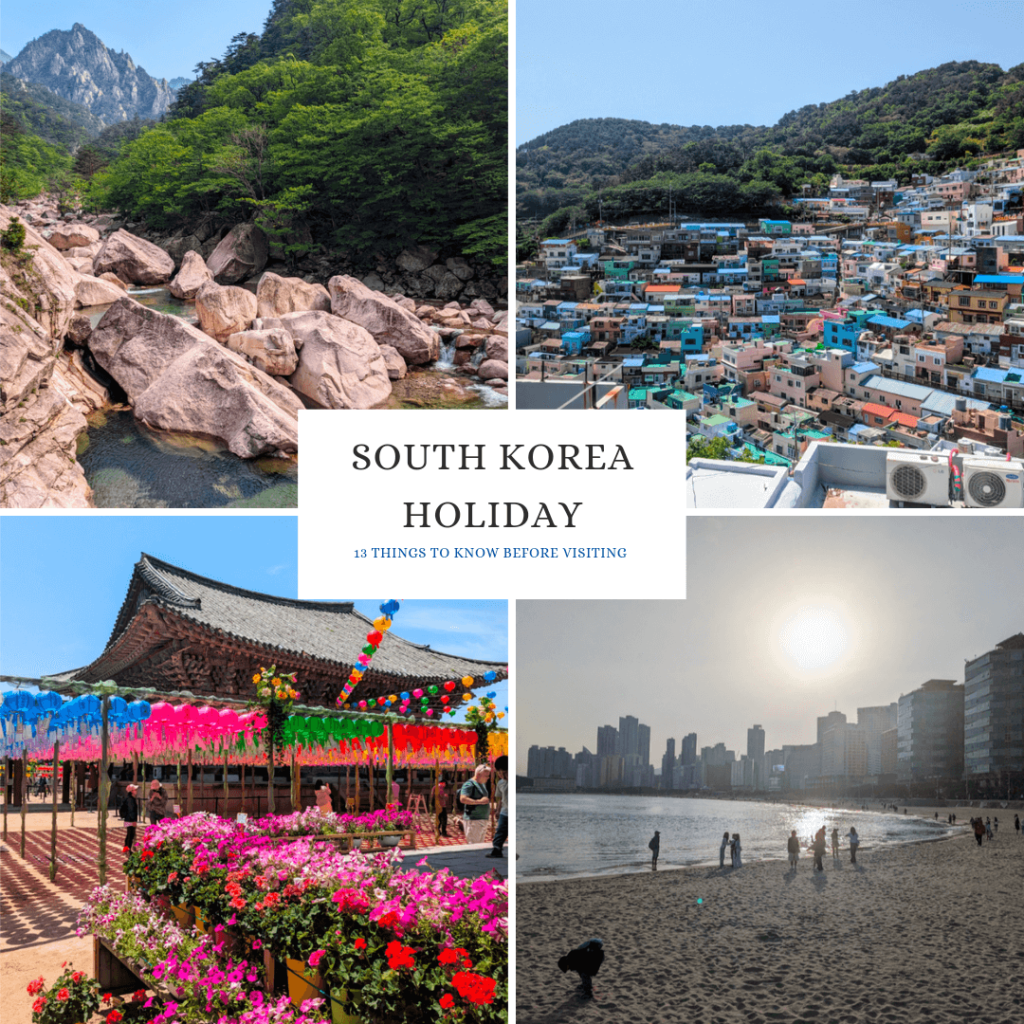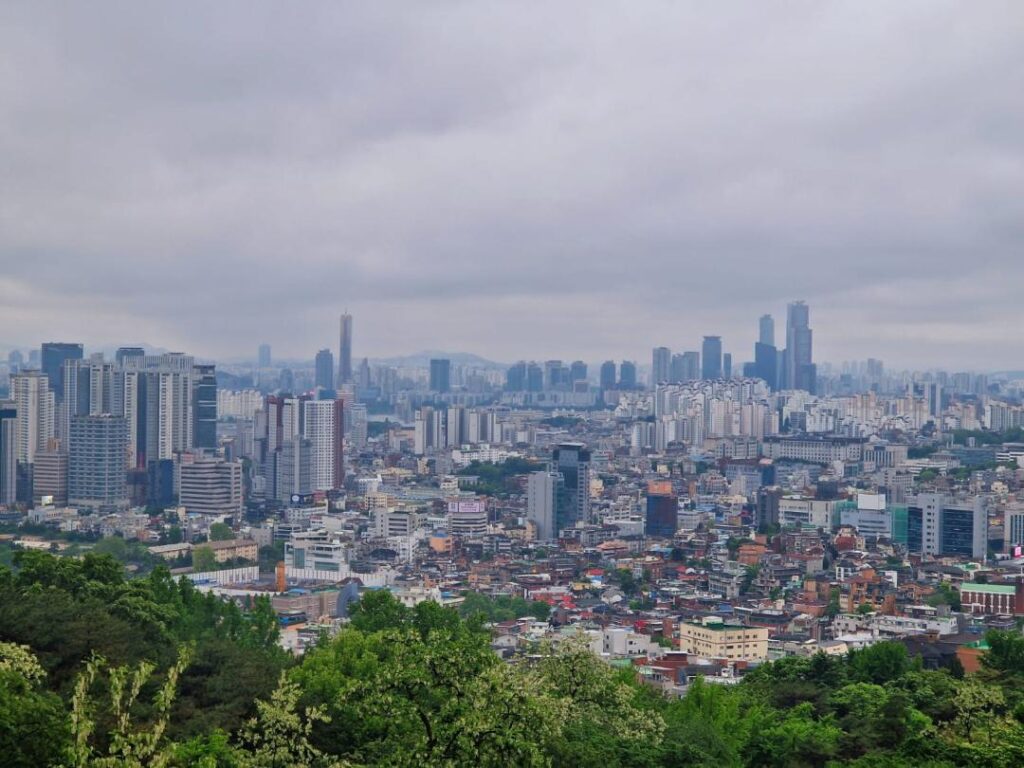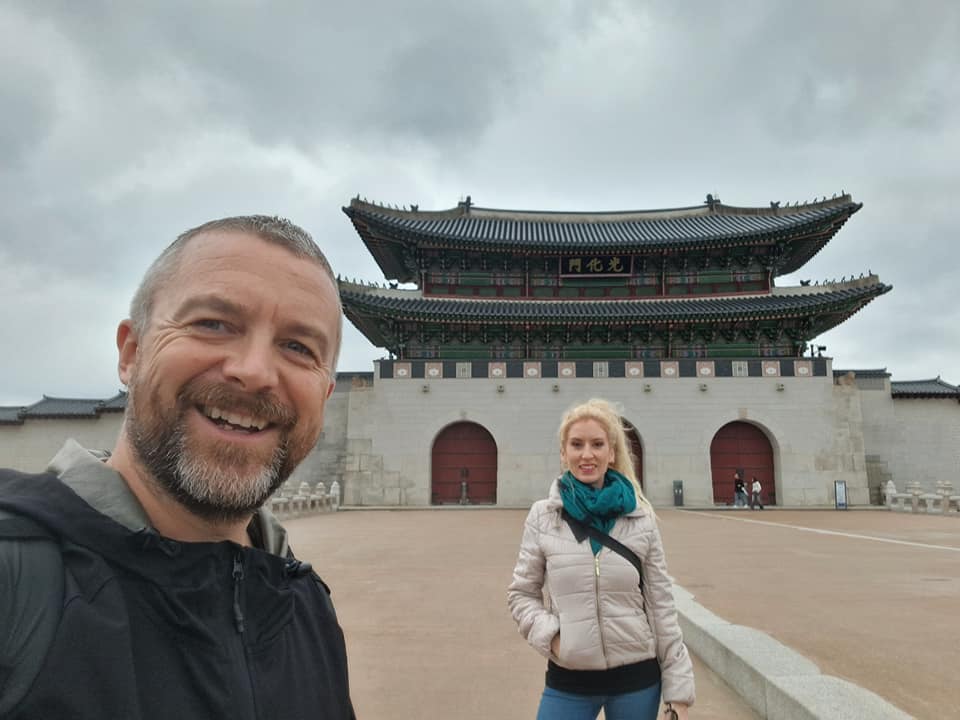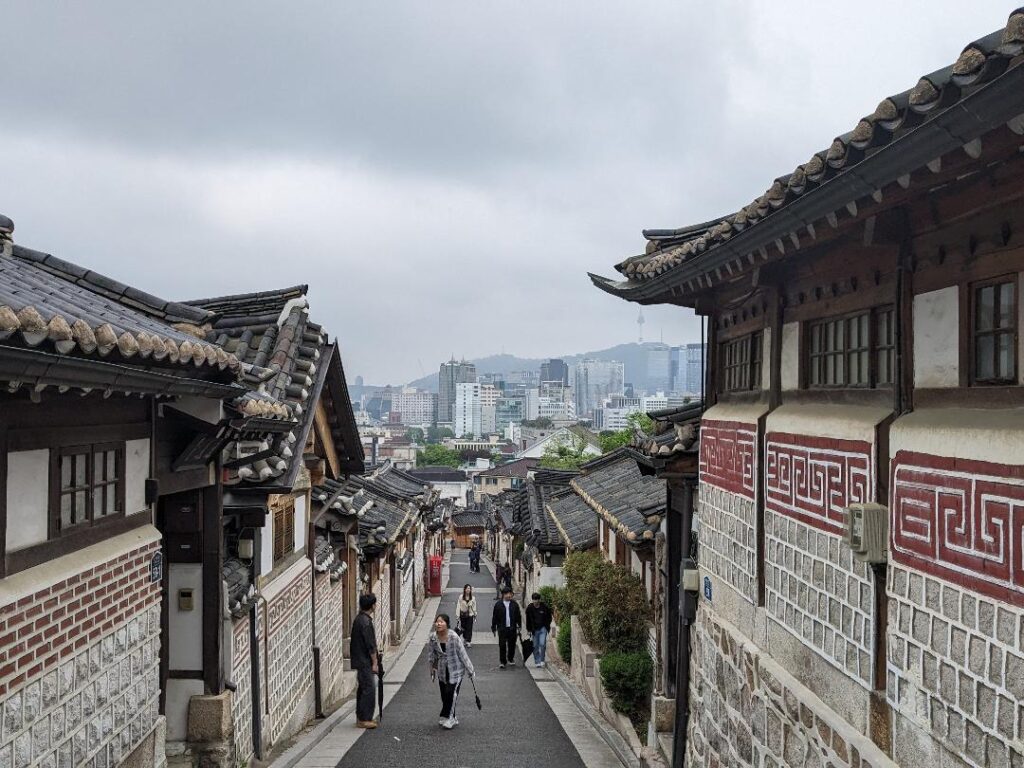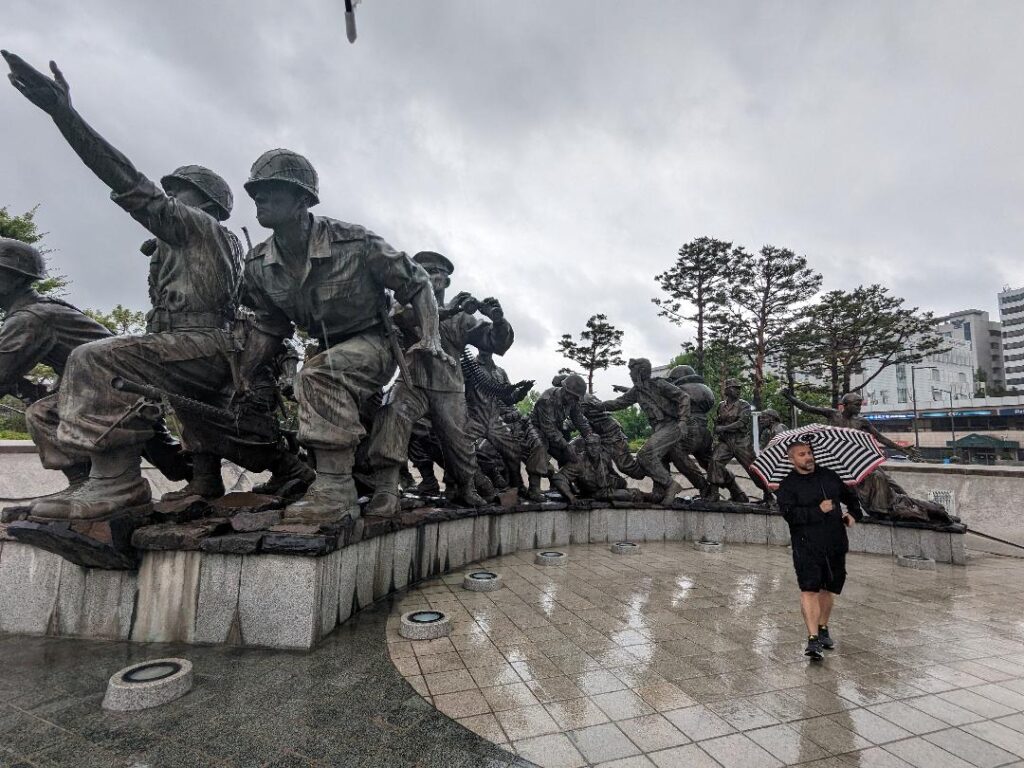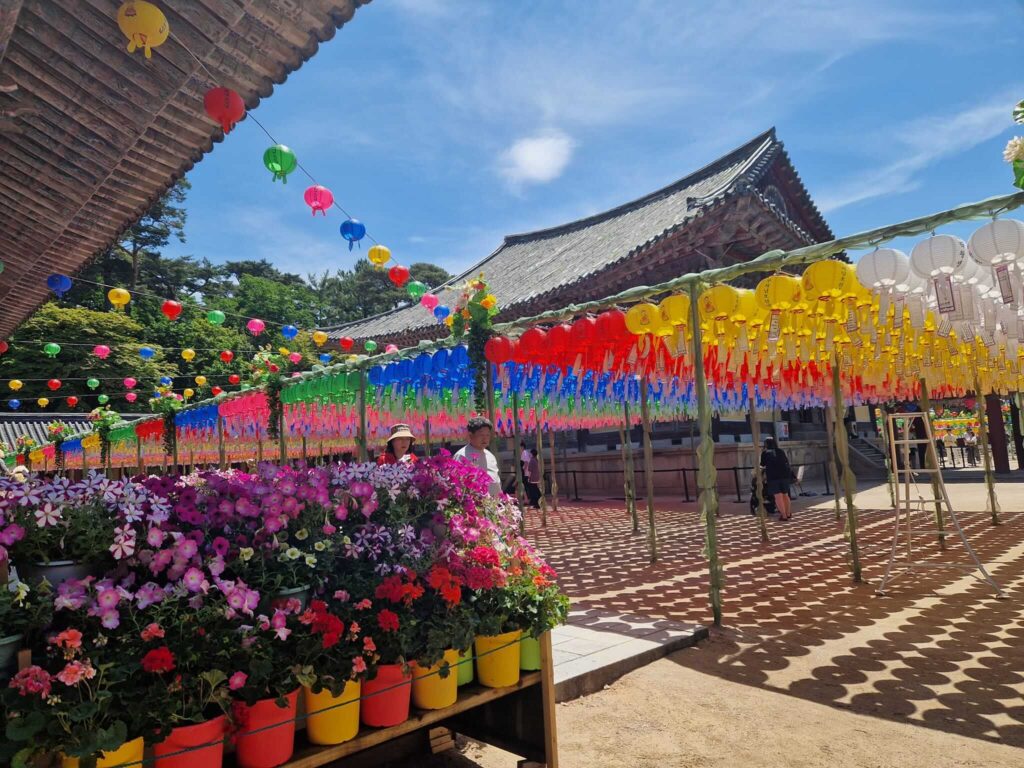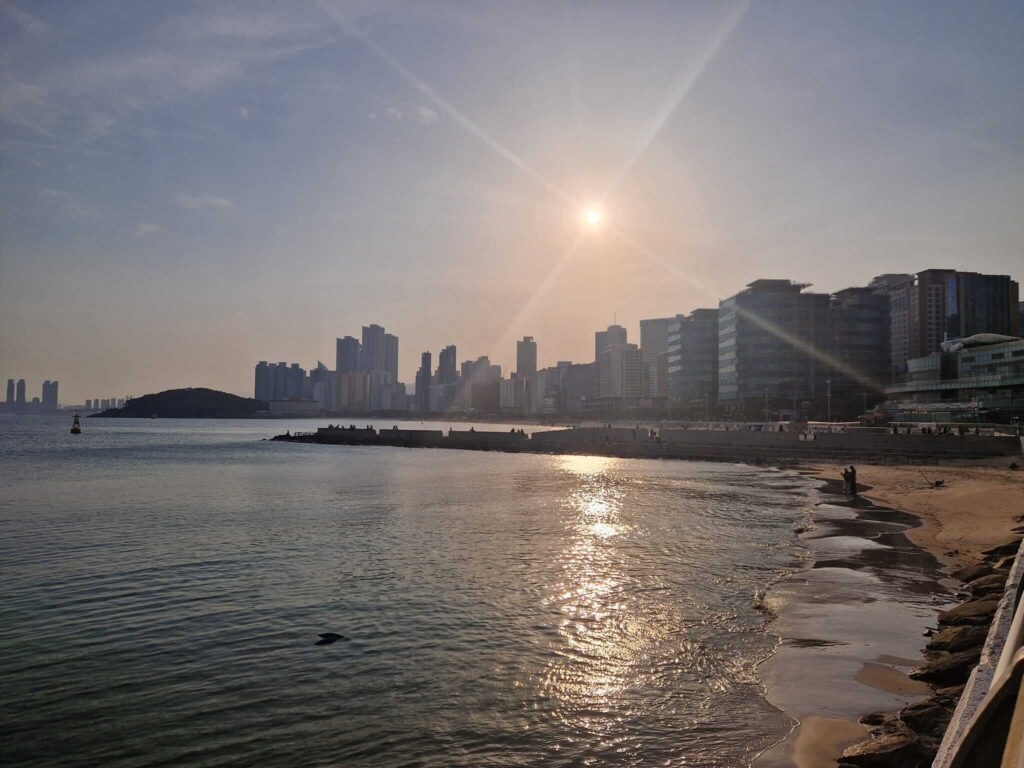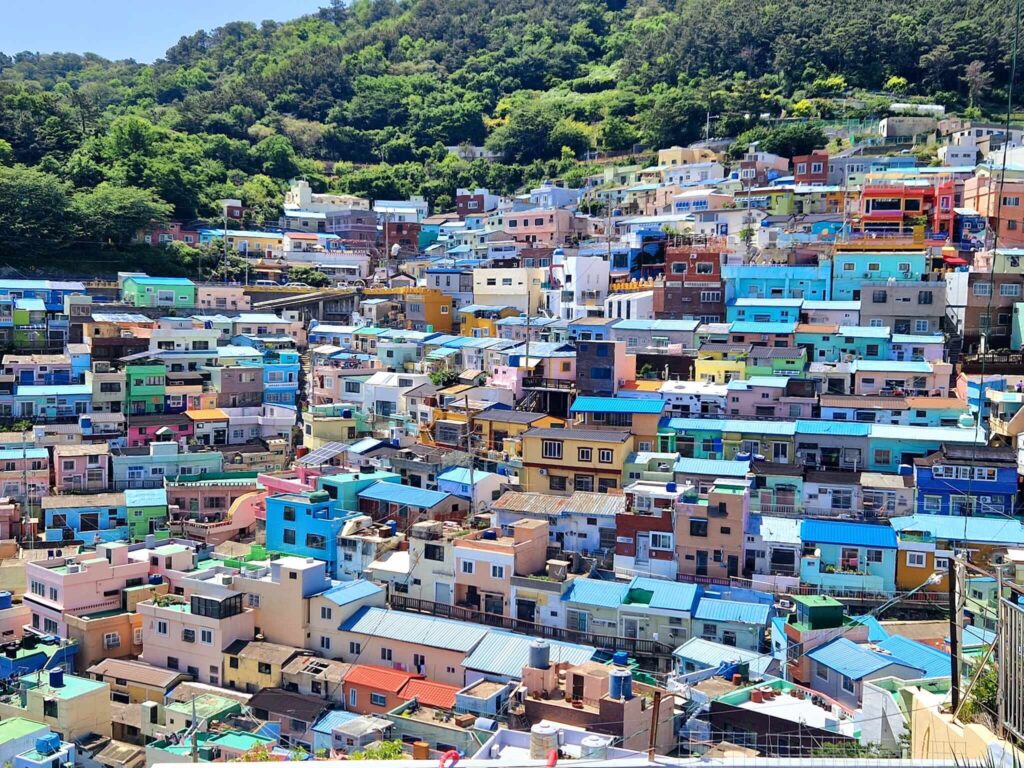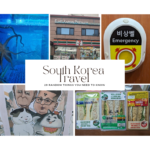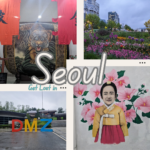Last updated on July 5th, 2024 at 08:41 am
Happy Irish Wanderers spent three weeks exploring South Korea, also referred to as the Republic of Korea, and were pleasantly surprised, particularly, by its stunning natural landscapes.
From its historic temples and beautiful nature to vibrant cities and delicious cuisine, there’s something for everyone to enjoy when visiting South Korea.
This article provides comprehensive information on all the essential questions around visa information, the best things to do in South Korea, the ideal time to visit, a detailed breakdown of your South Korea budget with insights from our own spending, answers to crucial safety questions, and our opinion of whether South Korea is worth visiting.
We are here to help with your visit to South Korea and offer you the ultimate South Korea holiday guide, so let’s get into it.
1 – Do You Need a South Korea Visa?
Firstly, do you need a South Korea visa for your trip?
Whether you need a South Korea visa depends on your nationality and the purpose of your visit. Citizens of many countries, including the United States, Canada, the European Union, and Australia, can enter South Korea visa-free for short stays (usually up to 90 days) for tourism or business.
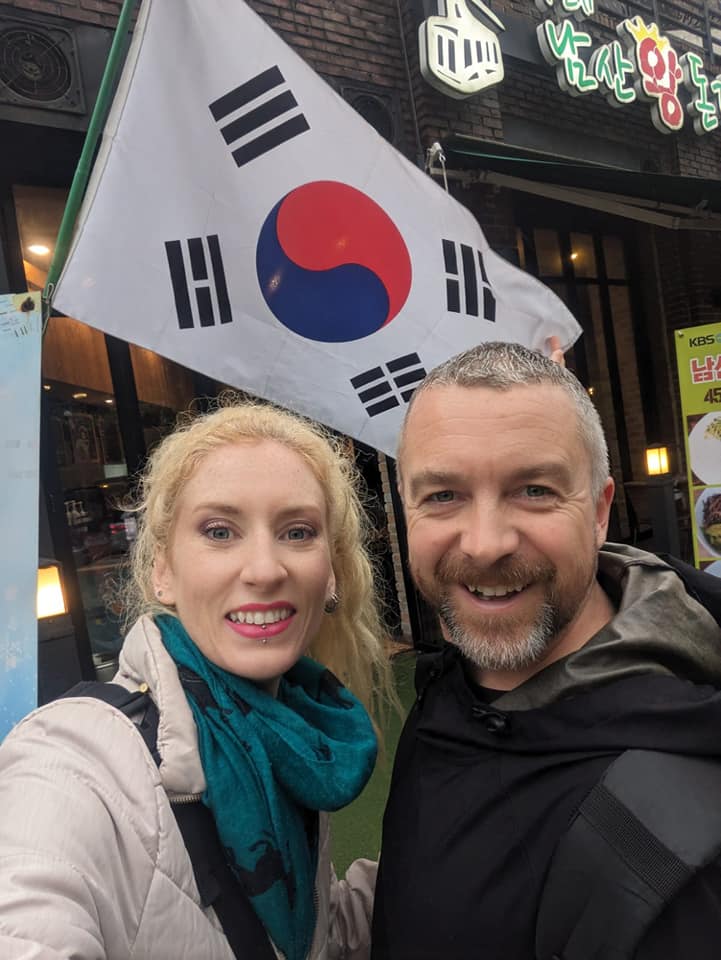
However, it’s always best to check the latest visa requirements with the South Korean embassy or consulate in your country before planning your South Korea holiday.
2 – What are the Best South Korea Attractions?
From mountain hikes scattered with serene temples, and bustling cities to pristine beaches, we are certain that visiting South Korea proves to make for one incredible holiday.
Let’s check out what are the best South Korea attractions, starting in the South Korean capital of Seoul.
Best Things to Do in South Korea: Gyeongbokgung Palace
Located in Seoul, this grand palace is a must-visit for its historical significance and beautiful architecture.
Best Things to Do in South Korea: Bukchon Hanok Village
Experience traditional Korean culture by exploring this village with its well-preserved hanok (traditional Korean houses).
Best Things to Do in South Korea: N Seoul Tower
Get panoramic views of Seoul from this iconic tower located on Namsan Mountain.
Best Things to Do in South Korea: DMZ (Demilitarized Zone)
Take a tour to this unique and historically significant area between North and South Korea.
Best Things to Do in South Korea: Myeongdong Shopping Street
A bustling shopping district in Seoul, perfect for fashion, cosmetics, and street food.
Best Things to Do in South Korea: War Memorial of Korea
We truly loved our visit to the War Memorial of Korea in Seoul. This fascinating museum offers a comprehensive look at Korea’s military history, including exhibits on the Korean War and other significant conflicts.
We actually learned more at this free museum visit than we did on the DMZ tour, and easily spent 5 hours wandering about this interesting South Korea attraction.
Check out for a detailed guide of our favourite places to visit in Seoul.
Best Things to Do in South Korea: Seoraksan National Park
Continuing on from city life in Seoul, our next stop was to Sokcho.
We highly recommend a visit to Sokcho, if not for the beautiful beach vibes, then for its breathtaking mountain scenery and hiking trails.
This is where the stunning natural landscape truly surprised us during our South Korea holiday, we were awe-struck by nature’s beauty in Seoraksan National park.
Best Things to Do in South Korea: Gyeongju
From beautiful Sokcho, venture to Gyeongju, a city in the southeastern part of the country.
Known as “the museum without walls,” Gyeongju is home to numerous historical sites, including Bulguksa Temple and Seokguram Grotto.
Gamcheon Culture Village
Many people visit South Korea and stay in Seoul for the duration of their South Korea holiday. However, we are here to convince you to venture further afield.
A South Korea holiday has so much more to offer, and the city of Busan proved to be our favorite South Korea city. One colorful village stood out for us in particular.
Often referred to as the “Machu Picchu of Busan,” Gamcheon Culture village in Busan is famous for its artistic murals, winding streets, and vibrant atmosphere.
Best Things to Do in South Korea: Busan’s Haeundae Beach
Staying in our favorite South Korea city, Busan, doubling up as a popular beach destination offering a mix of urban attractions and scenic coastal views.
At Haeundae Beach, you can experience vibrant beach culture with activities like water sports such as jet skiing and paddle boarding, stroll along the lively promenade lined with shops, restaurants, and cafes, and enjoy stunning sunset views over the East Sea.
Best Things to Do in South Korea: Jeju Island
We’ve already had a mix of South Korea attractions mentioned, why not throw in a stunning island stay in the mix!
Known for its stunning natural beauty, Jeju Island offers everything from volcanic landscapes to beautiful beaches and waterfalls.
Not a bad spot to end an incredible South Korea holiday.
3 – South Korea Weather: What is the Best Time to Visit South Korea?
The best time to visit South Korea depends on your preferences and what you want to experience:
Spring (April to June): This is a popular time to visit South Korea due to mild temperatures, cherry blossoms in April, and vibrant green landscapes. It’s ideal for outdoor activities and sightseeing.
We visited South Korea in May, and although we had quite a bit of rain for the first few days in Seoul – hence the 5 hour museum visits! – it was perfect for the remainder of our South Korea holiday.
Summer (July to August): It’s hot and humid during these months, but it’s also festival season with events like Boryeong Mud Festival. South Korea beach destinations like Busan and Jeju Island are popular during this time.
Autumn (September to November): Many consider this the best time to visit South Korea due to pleasant weather, clear skies, and stunning autumn foliage, especially in places like Seoraksan National Park.
Winter (December to February): Winter in South Korea can be cold, especially in January and February, but it’s a great time for winter sports in places like Pyeongchang and for experiencing winter festivals and activities.
Overall, the spring and autumn months are typically the best time to visit South Korea for pleasant weather and beautiful scenery.
4 – What is The Currency in South Korea?
The currency used in South Korea is the South Korean Won, abbreviated as KRW.
As of our last update, 1 USD is roughly equivalent to around 1,300 to 1,400 South Korean Won (KRW).
5 – South Korea Budget: How Much Should I Budget for my South Korea Holiday?
If you are used to travelling South East Asia countries with an extremely lost cost of living like Indonesia, Thailand and Vietnam, then expect to pay more during your South Korea trip.
Your budget for a South Korea holiday can vary widely depending on your travel style, preferences, and activities, but luckily many South Korea attractions are very reasonably priced or free to visit.
In fact, the only tour we paid for during our South Korea trip was the DMZ tour.
Here’s a rough breakdown of average daily costs to help you plan your South Korea budget and in the following section we will breakdown our actual South Korea budget so you can see in real life what this looks like.
At the time of writing, the US Dollar and Euro were nearly equivalent in value.
Here’s a rough breakdown of average daily costs to help you plan:
South Korea Budget: Accommodation
Budget accommodations like hostels or guesthouses can range from $20 to $50 USD per night. Mid-range hotels typically cost between $50 to $150 USD per night, while luxury hotels can go upwards from $150 USD.
South Korea Budget: Food
Street food and local restaurants offer affordable options starting from $5 to $10 USD per meal. Dining at mid-range restaurants may cost around $15 to $30 USD per meal per person. High-end dining can range from $50 USD and up.
South Korea Budget: Transportation
Public transportation in cities like Seoul is efficient and affordable, with subway rides costing around $1 to $2 USD per trip. Intercity travel by train or bus varies but can range from $10 to $50 USD depending on distance and class.
South Korea Budget: Sightseeing and Activities
Entrance fees to South Korea attractions generally range from $2 to $20 USD per person. Special experiences or tours may cost more.
South Korea Budget: Miscellaneous
Budget extra for shopping, souvenirs, and unexpected expenses.
For a moderate budget, aiming for around $50 to $100 USD per day per person should provide a comfortable experience. However, as mentioned above, actual costs can vary widely based on personal preferences and the specific itinerary planned.
It’s advisable to plan ahead and research specific costs for your desired activities and accommodations.
How Much is our South Korea Budget for a Month?
For our 3 week South Korea holiday we spent 1051 euro/ 1123 USD altogether, making it a daily spending of 55 euro/ 58 USD. Only slightly more than our Taiwan budget 3 weeks prior.
The following is the breakdown of our South Korea budget:
Accommodation: We spent 438 euro on accommodation during our South Korea holiday which works out at 20 euro/ USD per night.
During our visit to South Korea we booked basic accommodation but always with a private bathroom, aircon, and in a good location to South Korea attractions.
We use Booking.com when booking our accommodation during all our travels.
Food: We spent 320 euro on food during our South Korea holiday, which averages out at 15 euro per day.
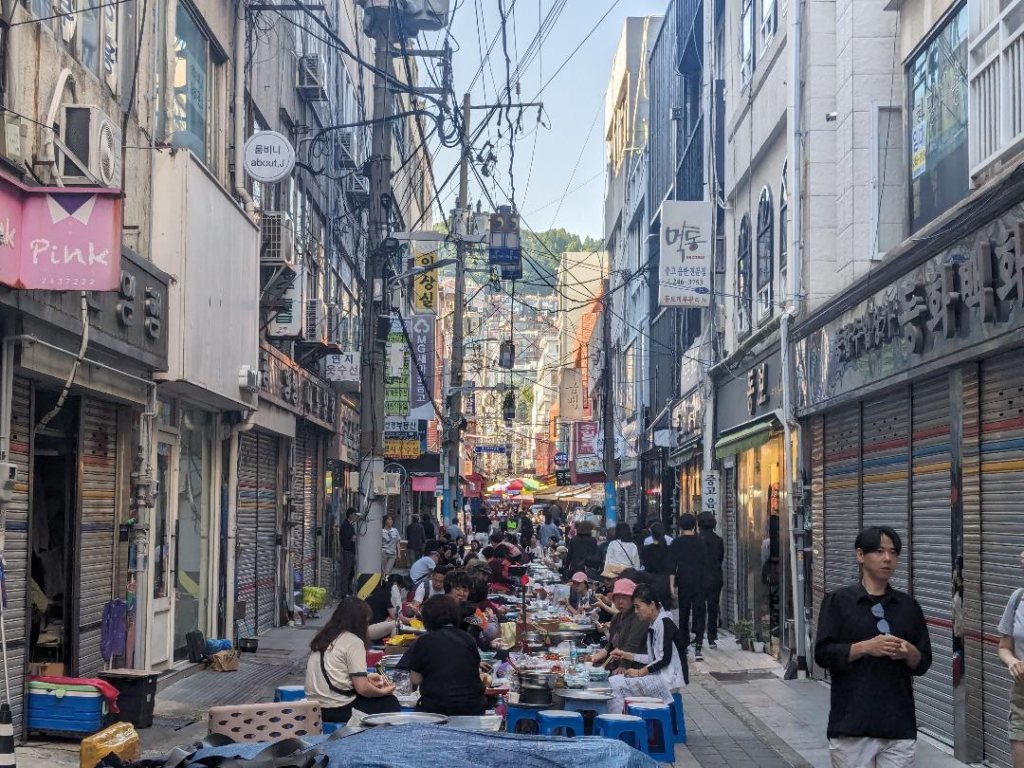
Keep in mind that we are travelling full time and we ate in local markets and local restaurants during our visit to South Korea.
Alternatively, it is possible to have pretty decent meals in stores such as 7-Eleven, as well as snacks such as sandwiches for when you are on the go.
South Koreans know how to make GOOD sandwiches!
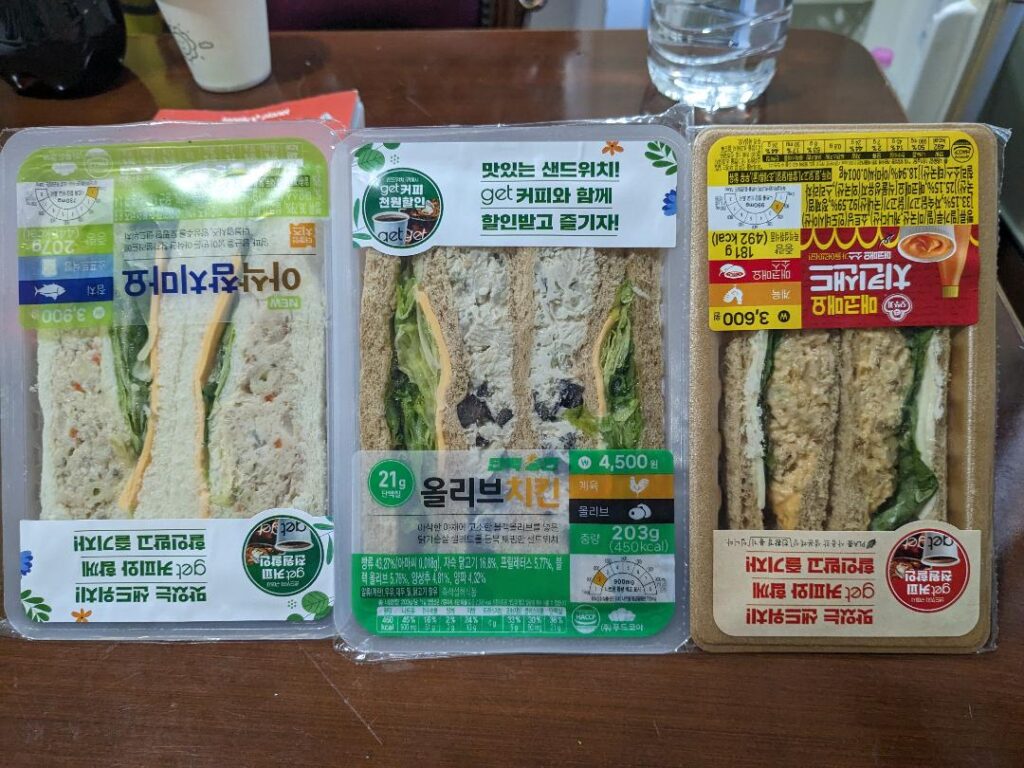
Read all about how we eat cheap around the world.
Alcohol: We did not drink alcohol during our visit to South Korea. I know we are from Ireland but it is true!
Transportation: We wanted to see as much as we could during our South Korea holiday and we visited five different places in South Korea, which meant lots of transportation.
We spent 178 euro/ 190 USD of our South Korea budget on transportation – which was extremely efficient and comfortable.
South Korea Attractions: We spent 100 euro during our visit to South Korea on activities – as mentioned earlier, this was for the DMZ tour.
We told you that Taiwan attractions were very cheap or free!
Miscellaneous: The remaining 14 euro was spent on shopping.
Once again it is important to remember that we are travelling full time and are experts at keeping costs down.
If you’re planning a South Korea trip, make sure you take into consideration expenses for tours, transport, more luxurious accommodations, alcohol and eating out, we’d suggest budgeting almost double our spending for a typical South Korea holiday.
6 – Can You Drink Alcohol During Your South Korea Holiday?
Can you drink alcohol during your South Korea holiday? The answer is absolutely yes you can.
In fact, enjoying a drink is a part of experiencing South Korean culture, but it’s essential to do so responsibly and respectfully.
We actually heard from someone who lived in South Korea, that Koreans are referred to as the Irish of Asia – make of that as you will!
7 – South Korea Transport: How to Get Around During Your South Korea Holiday?
Getting around during your South Korea holiday is relatively easy and convenient thanks to its efficient transportation system.
Here are some of the main ways to get around during your visit to South Korea:
Subway and Buses: Major cities like Seoul and Busan have extensive subway systems that are clean, safe, and easy to navigate. Buses also cover areas not reachable by subway. Both subway and bus fares are affordable, and you can use rechargeable T-money cards for convenience.
Taxi: Taxis are readily available in cities and are metered. They’re more expensive than public transportation but can be convenient, especially for shorter trips or when traveling in a group.
Intercity Trains: Korea Train Express (KTX) is the high-speed rail network that connects major cities like Seoul, Busan, and others. It’s fast, comfortable, and efficient for longer distances.
Intercity Buses: These buses are another option for traveling between cities and regions. They are comfortable and operate on regular schedules.
Rental Cars: If you prefer flexibility or plan to explore rural areas extensively, renting a car is an option.
However, keep in mind that driving in urban areas can be congested, and international driving permits are required for some nationalities.
Domestic Flights: For longer distances or if you’re short on time, domestic flights are available between major cities and Jeju Island.
For most travelers, using a combination of subway, buses, and occasional taxis is sufficient and cost-effective for getting around South Korea.
The transportation signage and announcements are often in English, making it accessible for international visitors. Honestly, it is very easy here!
South Korea Transport Tips:
Use T-money Card: Purchase a T-money card for convenient access to subway, bus, and even some taxi rides. You can buy and recharge these cards at subway stations, convenience stores, and major transportation hubs.
Learn Basic Korean Phrases: While many signs and announcements are in English, knowing a few basic Korean phrases for directions or destinations can be helpful, especially in more local or less touristy areas. Hold tight we’ll help you with this too in a following section!
Plan Your Route: Use smartphone apps like KakaoMap or Naver Maps for real-time navigation and public transportation routes. These apps provide accurate information on subway schedules, bus routes, and walking directions.
Check Rush Hours: Avoid traveling during rush hours (typically early morning and late afternoon) if possible, especially on subways and buses in major cities like Seoul, to avoid overcrowding.
Respect Priority Seats: Priority seats on buses and subways are designated for elderly, disabled, and pregnant passengers. Be mindful and offer these seats if you are able to.
Prepare for Holidays: Transportation can be busier during major holidays and festivals. Plan ahead and book tickets or accommodations early if traveling during these times.
Consider Cultural Norms: When taking taxis, it’s polite to sit in the back seat rather than the front unless traveling with a large group. Tipping is generally not expected in South Korea.
Keep Cash for Smaller Shops: While major establishments accept cards, smaller shops, local markets, and street vendors often prefer cash. Having some cash on hand is useful for these situations.
Is There Uber in South Korea?
Yes, Uber operates in South Korea, primarily in major cities like Seoul and Busan. It’s a convenient option for getting around, especially if you prefer the ease of app-based hailing and payment.
8 – Can you use ATMs in South Korea?
Yes, you can use ATMs in South Korea. ATMs are widely available throughout the country, especially in urban areas, airports, and shopping centers.
Consider purchasing a travel money card like Revolut so as to avoid any additional transaction fees while travelling abroad.
9 – What Socket Type to use During Your South Korea Holiday?
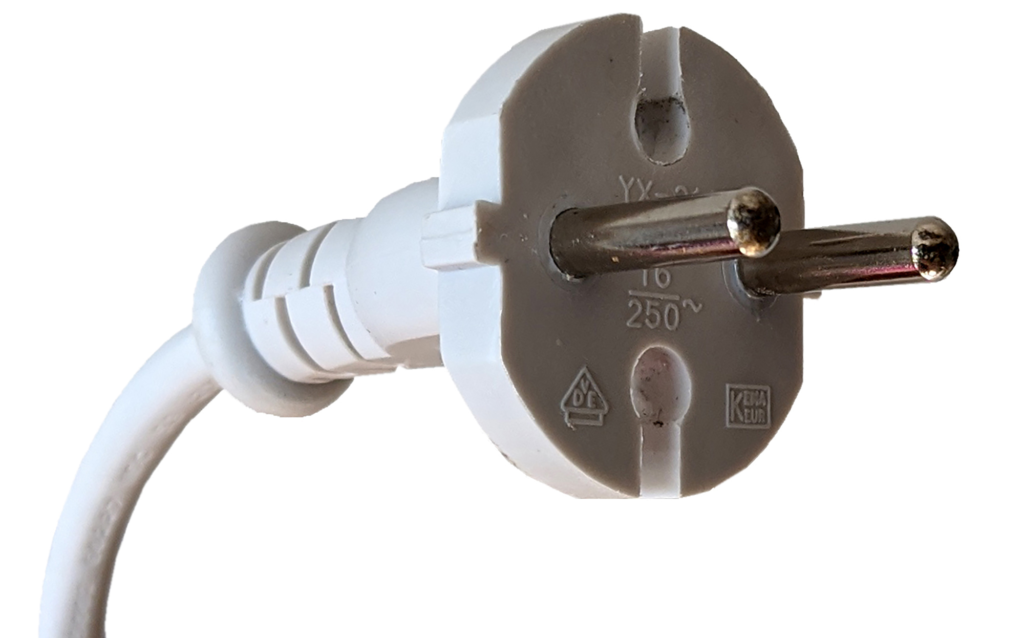
The main socket type used in South Korea is type C, which is the standard European two-pin socket. However, type F sockets (grounded versions of type C) are also common and widely used.
Consider purchasing a Multi Travel Adapter so you are prepared for any plug type.
10 – Is South Korea Safe to Visit?
Is South Korea safe to visit? A very important question, especially given the current tensions occurring with North Korea.
South Korea is generally considered a safe country for travelers and we had no issues during our 3 week South Korea holiday and felt safe at all times.
South Korea has a low crime rate, and violent crime against tourists is rare. However, like any destination, it’s wise to exercise common sense and take standard precautions to ensure your safety:
Street Safety: Exercise caution in crowded areas and be mindful of your belongings, especially in tourist-heavy locations where pickpocketing can occur.
Health and Hygiene: South Korea maintains high standards of hygiene, but it’s still advisable to drink bottled or boiled water, particularly in rural areas.
Natural Disasters: South Korea is prone to occasional typhoons and earthquakes, especially in the southern regions. Stay informed about local weather conditions and follow any advisories or instructions from local authorities.
Political Situation: Keep informed about any political developments, protests, or demonstrations that may occur. While protests are generally peaceful, it’s best to avoid participating or getting too close to them as a visitor.
Emergency Services: Familiarize yourself with the local emergency contact numbers, such as 119 for fire and ambulance services, and 112 for police.
Overall, South Korea is a safe and welcoming destination for travelers, and with basic precautions, no doubt you will enjoy your visit to South Korea.
11 – What Language is Spoken in South Korea?
The official language spoken in South Korea is Korean (한국어, Hangugeo). While English is taught in schools and widely understood in tourist areas and by younger generations, proficiency levels can vary among individuals.
Learning a few basic Korean phrases can be helpful and appreciated when visiting South Korea, especially in more local or less touristy areas. And it is just nice to be nice and make an effort right?!
Let’s get you started with some of the basics:
Hello: 안녕하세요 (annyeonghaseyo)
Thank you: 감사합니다 (gamsahamnida)
Please: 제발 (jebal) or 주세요 (juseyo) when requesting something
Excuse me / Sorry: 죄송합니다 (joesonghamnida)
Yes: 네 (ne)
No: 아니요 (aniyo)
Goodbye: 안녕히 가세요 (annyeonghi gaseyo) when someone is leaving
How much is this?: 이거 얼마에요? (igeo eolmaeyo?)
Where is the bathroom?: 화장실 어디에요? (hwajangsil eodieyo?)
It’s delicious: 맛있어요 (masisseoyo)
Give it a go, we are sure that your effort to speak the local Korean language during your visit to South Korea will be very much appreciated.
12 – What SIM Card to Get for Your South Korea Holiday?
We did not get a SIM card for our visit to South Korea and opted instead to utilize the free WIFI in various areas such as convenience stores, some cities and at our accommodation.
Do not always expect this to be the strongest of WIFI’s but it was enough to get us by, and at the very least, find out which direction to go in!
However, if you would prefer the convenience of our own data during your South Korea holiday, there are options of purchasing SIM cards at the airport on arrival, you can find booths offering SIM cards specifically for tourists, in convenience stores, or visit stores of major South Korean telecom companies such as KT (Korea Telecom), SK Telecom, and LG U+.
13 – Is South Korea Worth Visiting?
We loved learning about South Korea’s rich history, we embarked on hikes amongst temples and mountains, enjoyed bustling food markets in vibrant modern cities, and watched the sun set while chilling on pristine beaches – sounds like South Korea is worth visiting right?!
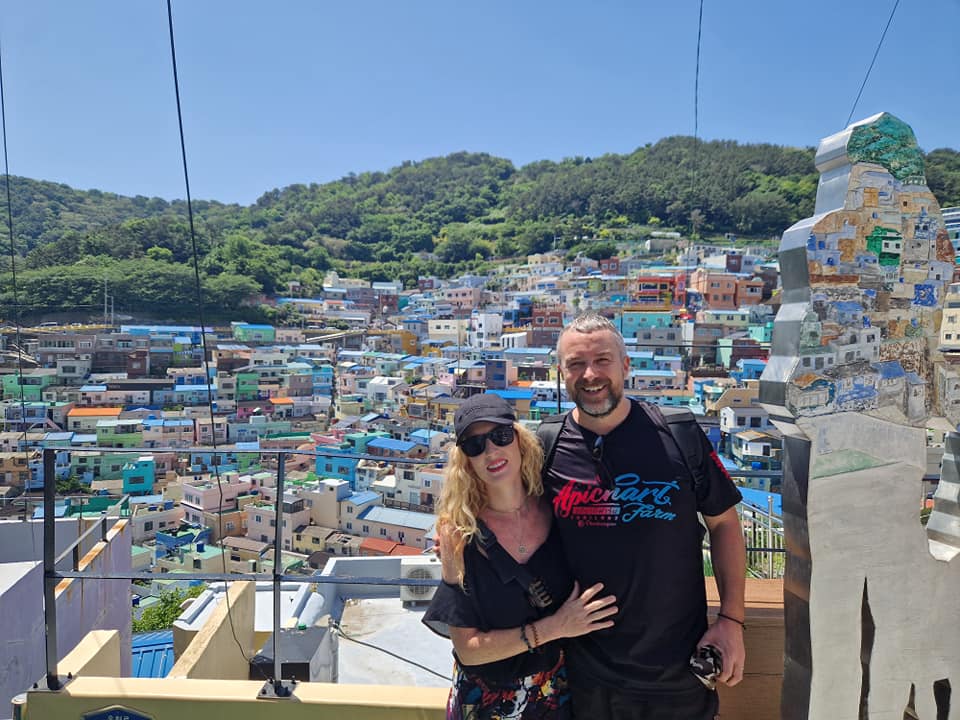
We think South Korea is most definitely worth visiting, and for all the reasons mentioned above we are certain that South Korea has something to offer every type of traveller.
Enjoy Your South Korea Holiday!
We truly hope you enjoy your South Korea holiday as much as we did, and we can even go as far as guaranteeing that you will.
This article focused on offering information regarding the best things to do in South Korea, best time to visit South Korea, breaking down your South Korea budget while sharing our own South Korea spending and answering the vital questions if South Korea is safe and finally, is South Korea worth visiting.
If we have left anything out please leave us know. We would love to hear from you.
Feel free to leave a message below or contact us on our socials.
Slán go fóil


This post contains affiliate links. If you click on the links to make a purchase, we will earn a small commission. This is at NO EXTRA COST to you. This is a free way to support us and allow us to continue to create inspiring adventure travel guides.

